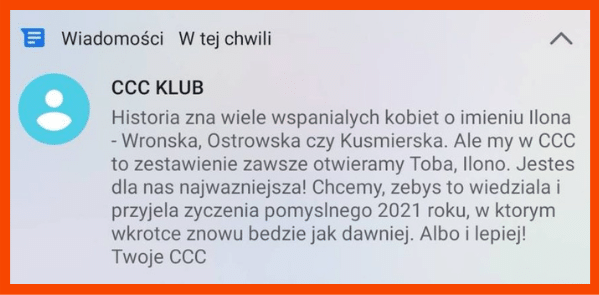Multilingual SMS Marketing
SMS marketing is an effective direct marketing tool often incorporated in omnichannel strategies. SMS marketing makes it possible to instantly activate customers in m-commerce sales channels. It is also efficient in personalising B2C communication. Reaching customers by texting in an appropriate form and language makes SMS marketing efforts even more powerful. But before we dive into what is appropriate, let me cover the basics.
The benefits of SMS marketing (in any language)
SMS marketing is always on time with:
- announcements regarding newly launched promotions,
- birthday wishes,
- seasonal discount codes,
- abandoned carts awaiting the return of their owners-to-be.
SMS marketing facilitates building relationships as it allows entrepreneurs to:
- use personalised names;
- celebrate important anniversaries;
- suggest solutions suited to customers’ age, interests, and location;
- send easy-to-understand messages.
SMS marketing is for anyone as:
- all generations understand SMS;
- all kinds and generations of mobile phones support SMS;
- no industry is excluded – SMS marketing is successfully used by global chain stores and local hair salons, huge financial institutions and entertainment venues, telecommunications giants and artisans.
But SMS marketing has some limitations too.
SMS marketing: technical and language-related issues
Recently, a text message from a major Polish shoe company sparked off a diacritics-related dispute amongst the members of a Facebook group connected to UX writing. As you can see, the CCC message has no diacritics:

The thing is, were it not an SMS (but e.g. a push notification), the diacritics would be there. And even an SMS can include diacritics. But they’re usually missing. And not just in Polish. Why?
Why SMSes with special characters have lower character limits?
It’s a matter of technology. If your mother tongue uses diacritics and you had a mobile phone back in the early 2000s, you probably still remember the tough decisions – should I use this special character and automatically lower the character limit, or should I just use the basic Latin script and keep all the 160 characters?
You will be surprised to hear this: nothing has changed! SMSing has become so cheap that we don’t have to count the characters. But there’s one group that keeps on counting: the SMS marketing people.
Typically, a standard SMS uses the 7-bit encoding and has a maximum limit of 160 characters. But use one letter with a diacritic, a Chinese character or a Russian letter, and the encoding changes to the 16-bit one, lowering the character limit to 70.
Even though today’s technology allows for sending long messages that look like a single SMS, in fact, they are still composed of numerous 160- or 70-character-long messages. And charged for accordingly.
Let’s get back to that screenshot. The message is 315 characters long, so it uses 2 SMSes 160 characters each (2 × 160 = 320, there are 5 characters left). If the Polish characters were used where they should be used, this message would cost the company as much as five SMSes (5 × 70 = 350; 35 characters left), not two. Take a look at this table:

The cost of a single SMS is the same, regardless of encoding. CCC saved a lot by eliminating the special Polish characters. They only sent and paid for 2 SMSes per customer, instead of 5. In fact, the difference in costs is so significant that eliminating Polish characters has become the standard practice.
Is 'SMS discrimination' a marginal issue?
If only it were! It may seem surprising from an English-centric perspective, but, to put it simply, in most European languages, sending a correct text using the 7-bit encoding is impossible.
The problem is even bigger in the case of Ukrainian and Russian. Those alphabets render the use of 7-bit encoding absolutely impossible. There is no workaround. You simply cannot write in Russian using the standard 7-bit characters. SMS marketing in Russian or Ukrainian is more than twice as expensive as SMS marketing in English, just because all texts in those alphabets have to use the 16-bit encoding.
As we move farther East or South, the issue becomes even more salient. Hanzi (Chinese characters) and Japanese kanji and kana also face this problem, as well as Hebrew and Arabic scripts. Luckily for the Chinese, their languages are very concise – character-wise.
Problems caused by missing diacritics
The problem is as follows: in the markets that allow for workarounds (like simply replacing special characters with the standard 7-bit characters), companies must choose between higher quality and lower cost. The cost usually wins. This, however, sometimes proves tricky.
Here are some issues related to creating and translating SMS marketing content:
SMS marketing and message length:
- Even without the change in encoding, messages created in English tend to get longer when translated into other languages – German is a classic example, but only one of many. Sending a longer SMS is more expensive, which makes the campaign less cost-efficient, or even renders it impossible, especially if the maximum message length limit offered by your communications service provider has been reached. Sometimes companies decide to rewrite the content in each new language to make it as short as the original. This may result in a less informative – or less creative – message.
- This issue is particularly important when the 7-bit encoding cannot be used (like in the case of Russian or Ukrainian) – it is advisable to allocate a more generous budget to SMS content in those languages in advance.
SMS marketing and message clarity:
- Replacing special characters with their bare Latin counterparts (e.g. ą>a, ź>z) may have a negative impact on the reading process and the overall comprehension, and thus lead to numerous misunderstandings. To make sure that such text is legible and comprehensible, it is advisable to write it without diacritics (instead of writing it with special characters and then using automatic replacement tools offered by some SMS marketing service providers).
- Reading without diacritics is a skill that can be developed but there is a group that has to overcome more difficulties than others. Seniors. They have very little experience in reading texts devoid of diacritics and they are already hampered by many age-related problems (eye fatigue, slower cognitive processes). This group is also more cautious and on guard against manipulation when using technology.
 SMS marketing and context:
SMS marketing and context:
- Messages that contain links, especially those informing about “irresistible” promos and encouraging recipients to take immediate action, often cause (and rightly so!) doubt and hesitation. Customers feel the need to check if the link looks safe, if the text is linguistically correct. At that moment, the presence of diacritics has a calming effect. Their absence only fuels the feelings of doubt.
- Customers are often advised to recall other messages from the same sender – do they look similar? Companies should therefore be advised to use a coherent style and form – diacritics (or the lack thereof) being part of the mix.
- In the conversation about the CCC message Diana Jankowiak wrote: “I can imagine many situations that make diacritics redundant in SMS. This message, however, is like a letter – a greeting card”. The “genre” of the message as well as the occasion it marks are also part of the context.
When to use multilingual SMS marketing?
Unlike multilingual websites, multilingual SMS marketing does not require large-scale translation effort and maintenance. What it does require is good knowledge of you recipients.
Entering new markets and operating in foreign markets in general – this is the basic context in which SMS marketing gains new language versions.
How about domestic multilingual SMS marketing?
If you know your recipient, you know how to write to them.
Consider creating variants of your messages based on more variables than just first name and/or gender.
Think about:
- Age: it impacts comprehension, particularly when you consider eliminating diacritics or using trendy buzzwords. It may also greatly influence the technological aspect and the matter of what solutions the recipients are ready to use – take into account that your recipients may have simpler devices that are not connected to the Internet, or simply not know or want to take advantage of all their functions.
- Life circumstances: age is no longer indicative of whether people have children or a stable income. It’s wise to draw conclusions from purchase history and viewed (though not bought) products to personalise SMS marketing.
- Mother tongue: English-speaking countries tend to have many migrant communities, but the same may be the case everywhere. Poland doesn’t seem to be a multicultural country, yet it’s home to over a million Ukrainian citizens. They buy from Polish companies and support the Polish economy. But even though most of them speak Polish very well, many might find reading in Polish a bit problematic. Why? Ukrainian uses a national variation of the Cyrillic script, completely different from the Polish alphabet. Why not create Ukrainian versions of messages (despite the lower character limits imposed when using 16-bit characters)?
OK, but how do you know whether a customer prefers to use Ukrainian if you didn’t ask them about it when collecting their personal details? Check which language version of your website or their web browser they use. Or simply ask!
SMS marketing is a versatile tool which you can utilise to communicate in multiple languages, both in your domestic market and abroad. Mother tongue is the language closest to one’s heart. It is the language we use to express happiness, sadness and anger. Write to your customers in the right place and at the right time – and in the right language – to reach their hearts and strengthen your relationship. In the times of diminishing customer loyalty, it’s priceless.






Leave a Reply